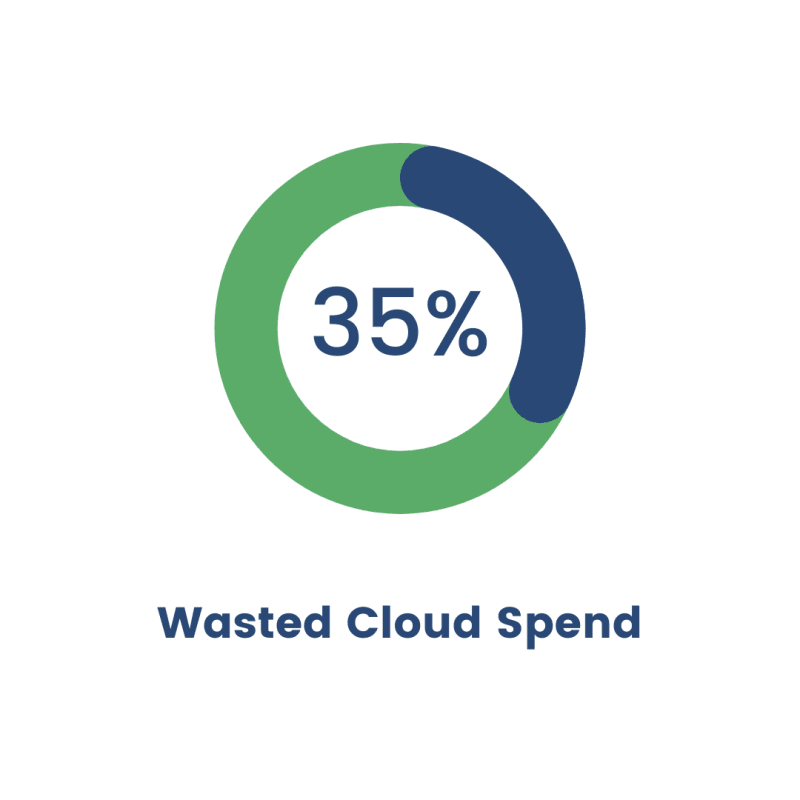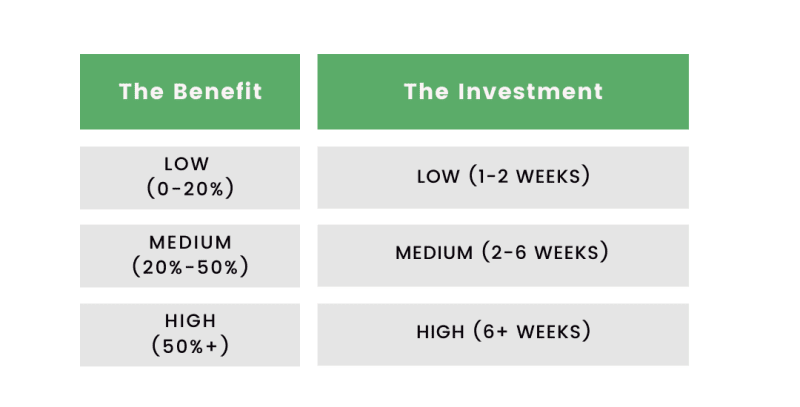How well does your company handle cloud costs? While you could have spending statistics at your disposal that will reassure you that the production team is under its monthly budget or that your monthly recurring income is on an upward trajectory, this data does not actually mean that you are handling investments in the cloud as well as you should be.
Check out our comprehensive guide on creating an AWS cost optimization strategy.
RightScale and Flexera teamed up to research the cloud spending habits of companies. What they found was that 35% or even higher of cloud spend is wasted. In times when nothing is certain and when a pandemic has taken over the world, companies are very careful with their spending. Saving the resources you normally waste on cloud spend could open new possibilities for product improvement and growth.
To hit you with some more numbers, 61% of companies are prioritizing cloud cost optimization this year, which makes it a number one initiative once again. Another top-three initiative is getting better financial reporting on cloud costs.
There are many challenges with AWS that teams are facing. It is not uncommon to see reports stating that companies are overspending on the cloud. They are losing tons of money on unused assets and consuming more capacity assets than they need. Rightsizing, arranging, and obtaining Reserved Instances for predictable workloads are some of the practices that AWS users often leverage to reduce their cloud costs.
However, these options might not be the only solutions. Every year there are new initiatives, tools, and best practices for AWS cost optimization that, when used right, could save you a lot more. There are many reasons why you need an AWS cost optimization strategy. In this article, we want to give a short introduction to what an AWS cost optimization strategy looks like.
Identify your costs
Costs and expenses are two different things. Expenses are what is required for a business to continue to operate and costs are associated with the delivery of final products. Costs can be fixed or variable, depending on the production of the company.
Dividing costs into fixed or variable can help identify where you can spend less. Analyze your requirements: What kind of storage you need? How much? What will your day-to-day operations look like?
Much like production lines try to identify which products are decreasing their production and not selling, you can identify projects that are not performing like you’ve anticipated and don’t need the scaling requirements set in the beginning. Decrease those production instances and storages and auto-scale when needed.
The most important thing here shouldn’t be the costs you cut, but where you can focus the resources to increase growth. This is called strategic cost reduction.
Key takeaway: Define which costs are strategically critical to the operation of your business. Everything else can either be decreased or cut completely, as they are non-essential costs.
Define your goals
Always get into something with the end goal in mind. To successfully adopt a cost reduction strategy, making a plan is first and foremost.
Do a lot of research and analysis on your business and the goals you want to achieve. Specify monthly, quarterly, yearly goals or a definite date that makes sense for your situation.
You can set up cost avoidance goals by teams. If there are teams that use a lot of computing and storage power, by looking at recommendations for rightsizing you can create targets for the team to optimize the workloads and follow the process. This is more effective than simple waste reduction, as it helps teams make intelligent decisions about the cloud needs.
Like any other initiative in the company, there needs to be direction and leadership. Cost optimization should be considered as a strategic move for the whole business.
But the most important goal here could be to create a cost-effective environment. Development teams should be enabled to understand cloud finance and economics. A good start is to obtain a cloud certification from AWS to be able to have discussions and implement cost management in the company.
Key takeaway: Everyone in the company should be aware of the cost optimization goals. Enabling teams to get more insights into cloud economics will create a cost awareness culture, which is the most important goal.
Practice makes perfect
With the specified goals in mind, an execution plan is the logical next step. But with millions of compelling initiatives you can do, how do you prioritize cost optimization recommendations and decide on the best ones for you?
The most simple way to make a decision can be to look at two parameters: the benefit and the investment.
The benefit looks at the estimated potential savings you can get by implementing the recommendation.
The investment looks at the estimated level of work that is required to implement the recommendation. This can be seen from a time and resource perspective, customer impact, technical risk to the system.
Here is an example of how you can look at the parameters:
Once you assign a score value to each idea you’ll be able to get a prioritization board which will ultimately be the foundation of your implementation plan. It could look like this:
Key takeaway: Prioritizing initiatives will give you a direction and will set things into perspective. You will understand what is feasible for your short-term and long-term goals. This will be the first step toward the actual implementation plan.
Measure and improve your strategy
In order to be able to measure the success of your strategy, you need to define some metrics to guide you. Some cost management metrics that can help you track costs more effectively are:
- Monthly growth – how efficiently your AWS implementation is rising in terms of the total costs
- Provisioned capacity & use – this will help you identify cloud waste
- Amazon EC2 unit and instance expenses – EC2 accounts for a greater portion of your expenses compared to other services
- Expenses for unused resources – this should be something that is decreasing when you have visibility into unused resources
- Data retrieval costs – you should be able to identify how much of your object storage charges are susceptible to data retrieval
You can read in detail about the 9 KPIs for measuring success with AWS savings here.
Establish a continuous cost control by tracking these metrics over time and recognizing patterns for improvement.
Key takeaway: Implement tools and dashboards to be able to monitor your performance for your defined metrics. Create a process to review the results against your defined goals and improve your strategy.
In the next article, we'll go through some most common AWS pricing plans and break them down in order to provide a better understanding of AWS costs







Top comments (0)